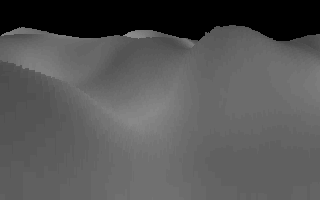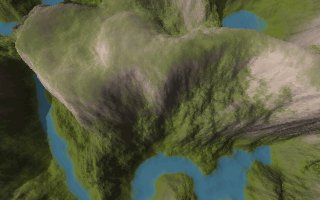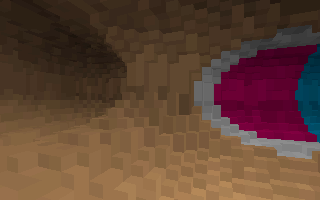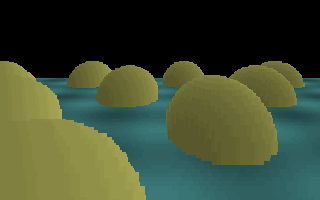

2018: PND3D source code released
2014: PND3D demo released: an abandoned, yet worthy sequel to Voxlap. Source code now included.
2005: Complete Voxlap source code released.
2004: Voxlap library released. (A subset of the 2005 Voxlap source code release)
2003 screenshots and first demo executable!
2002 screenshots of an unreleased Voxlap prototype game
When I graduated college in May, 2000, I started working on a new voxel engine called "Voxlap". (For those newbies out there, the word "voxel" is derived from "volume + pixel". It's like a 2D pixel, but in 3D - just a fancy name for a cube.) Most game engines these days use polygons. Polygons and voxels each have their advantages and disadvantages. For example, it's a lot easier to destroy a wall in a voxel engine. Also, there's no penalty for drawing curved surfaces over flat surfaces in a voxel engine.
I must say though, that polygons do have one really big (and unfair) advantage - all the 3D accelerators support them, and this makes them quite hard to compete with. It takes a strong will (and perhaps a guy with nothing better to do) to continue, but someday, voxels will rule the world! (I hope)
In June 2001, Tom Dobrowolski joined my "team" as a programmer. He's currently a student in Poland and he's been writing the game code for my voxlap engine demo in his spare time. He's a talented guy and it's great having him working with me on this project. Tom has his own website - he's got old demos and screenshots of his own there.Here are the features that Voxlap currently supports:
08/15/2006: Peter Houska has been doing experiments with voxels lately. Many of his demos support my own data formats from Voxlap, Groudraw, and Slab6. If you're a fan of voxels, you should check out his work.
Here's a collection of 7 more heightmap voxel demos, showing how I progressed from my first demo (April 1993) to some more advanced ones that lead up to Voxlap. Also included is a specially designed heightmap terrain generator from Tom Dobrowolski. Full source code included.
GROUDRAW.ZIP (535,022 bytes, 03/11/2006) (DOS32 mostly/OpenWatcom 1.3)

| 
|
Here's an early voxel demo of mine that I wrote in April, 1994. It features ceilings and floors, depth shading, and some primitive modification to the cave. Includes source code.
CAVE.ZIP (46,975 bytes, 05/29/2005) (DOS32)

Cave.exe screen shot
Want to make your own voxel engine, but don't know how to get started? Take a look at this little snippet of Qbasic code. It's slow in Qbasic, but if you port it to C, then it'll run MUCH faster. (Sorry, my voxlap algorithm is way too complex to explain here!)
GROUFST2.BAS (1,903 bytes) (DOS)

Groufst2.bas screen shot